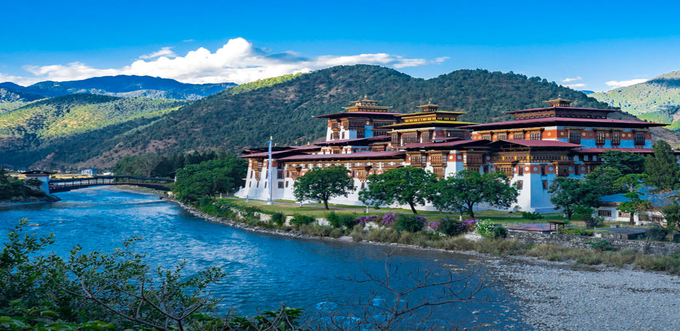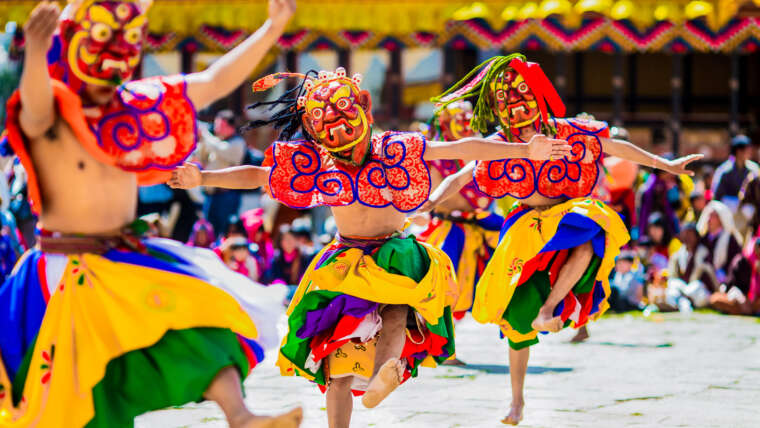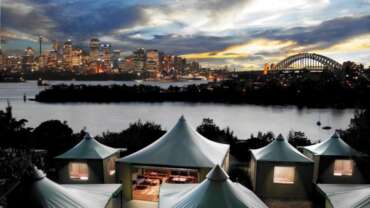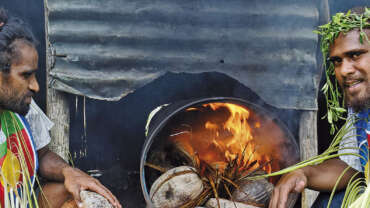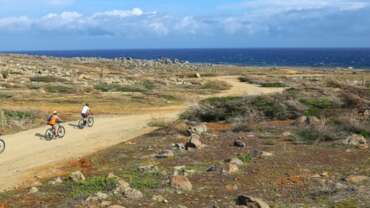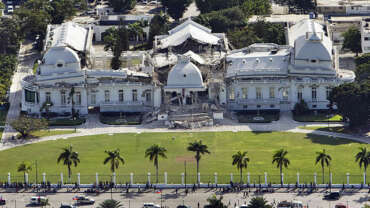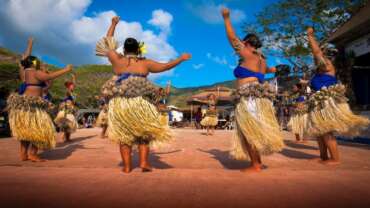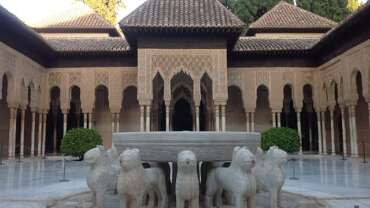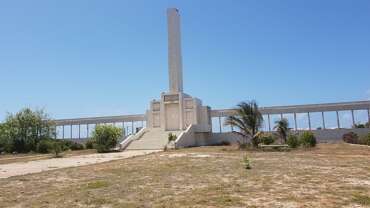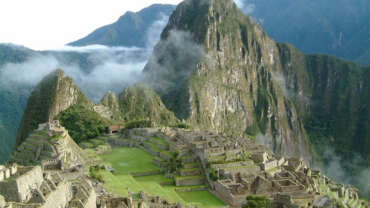Bhutan - Land of Happiness
Discover a Long-Closed Land – Draped along the mighty Himalaya lies tiny Bhutan, cut off from the “outside” for thousands of years. Now Bhutan is opening its gorgeous vistas, peaceful farms and unique traditions to a few lucky visitors. With us, gain special access to some of the most remote people and places in the world.
On an Opulent Routes journey to Bhutan, you can experience every facet of this incredible country. Travel to Thimphu, Bhutan’s temple-dotted capital, meeting monks in impressive monasteries. Continue into the stunning countryside to climb the twisting steps of the legendary Tiger’s Nest Monastery, impossibly perched 3,000 feet above the valley floor.
However you decide to explore Bhutan, rest assured that Opulent Routes’s expertise – built on years of developing local connections – will reveal the country from an insider’s perspective.
Discover the wonders of Shangri-La when you travel to the Dragon Kingdom of Bhutan with us. Enjoy insider experiences, unique cultural interactions and a host of extraordinary moments on one of our Bhutan luxury tours.
Spend a day visiting the highlights of Thimphu, including the Memorial Chorten, erected as a sign of hope for world prosperity; the traditional school of arts and crafts; and the Folk Heritage Museum and National Library. Visit an animal sanctuary to see the country’s national animal, the takin (also called the gnu goat), in its native habitat. Immerse yourself in Bhutanese culture as you explore the village of Nobgang and visit a local farmhouse.
On the banks of the Paro River, marvel at the grandeur of the Rinpung Dzong, which is also one of the oldest and most venerated Buddhist monasteries in the country. Delve deeper into Bhutanese history as you admire the collection of religious artifacts and intricately painted scrolls in the National Museum. Outside Paro, ascend to one of Bhutan’s holiest monasteries, the Tiger’s Nest, perched dramatically on the side of a cliff.
Mountains are blanketed with evergreen forests and dotted with Buddhist temples, valleys are sliced by glacial rivers and the piney air is delicious and clean. Bhutan’s luxury hotels and lodges are divine, but it is the Bhutanese people that make trips to Bhutan so special – they are extremely quick to laugh, and they’ve even been ranked number one in the world for Gross National Happiness!
Bhutan is perhaps the most fascinating of the Himalayan kingdoms as travel entry was forbidden to visitors until 1974, and even after that numbers were still minimal. Landlocked by the mighty Himalayan peaks, Bhutan has been doubly protected from external influences, and as a result, the traditional way of life has survived largely intact. Deep rooted Bhutanese culture means that archery is still the national sport, and the gracious, gentle people continue to wear traditional dress: elegant wraparound skirts or “kira” for the women and checked, floor-length belted robes or “Gho” for the men.
Wherever you travel in Bhutan, we’ll be right there with you, making sure your journey is authentic, innovative and utterly unforgettable.
History of Bhutan
The name ‘Bhutan’ appears to derive from the Sanskrit ‘Bhotant’ meaning ‘the end of Tibet’ or from ‘Bhu-uttan’ meaning coronation-logo’high land’. Though known as Bhutan to the outside world, the Bhutanese themselves refer to their country as Druk Yul or the Land of the Thunder Dragon. ‘Druk’ meaning ‘Dragon’ and extending from the predominant Drukpa school of Tibetan Buddhism.
The documented history of the Kingdom begins with 747 A.D. with Guru Padsambhava also known as Guru Rinpoche who made his legendary trip from Tibet across the mountains flying on a tigress’s back. He arrived in Paro valley at Taktsang Lhakhang also known as Tiger’s Nest. Guru Rinpoche is not only recognized as the founder of the Nyingmapa religious school but also considered to be second Buddha. In the ensuing centuries, many great masters preached the faith resulting in full bloom of Buddhism by the middle ages. Although sectarian at first, the country was eventually unified under Drukpa Kagyupa sect of Mahayana Buddhism by saint/administrator Shabdrung Ngawang Namgyal in the 17th century. Ngawang Namgyal codified a comprehensive system of laws and built a chain of Dzongs which guarded each valley during unsettled times and now serving as the religious and administrative centre of the region.
During the next two centuries civil wars intermittently broke out and the regional Governors became increasingly more powerful. At the end of 19th century, Trongsa Governor overcame all his rivals and soon afterwards recognized as the overall leader of Bhutan. The Governor of Trongsa, Sir Ugyen Wangchuck, was elected as the first King of Bhutan in 1907 by an assembly of representatives of the monastic community, civil servants and people. The country has now the system of constitutional monarchy.
People of Bhutan
People
Bhutanese people can be generally categorized into three main ethnic groups. The Tshanglas, Ngalops and the Lhotshampas.
Tshanglas: The Tshanglas or the Sharchops as they are commonly known as, are considered the aboriginal inhabitants of eastern Bhutan. According to historians, Tshanglas are the descendants of Lord Brahma and speak Tshanglakha. They are commonly inhabitants of the eastern part of the country. Weaving is a popular occupation among their women and they produce beautiful fabrics mainly of silk and raw silk.
Ngalops: The Ngalops who have settled mostly in the six regions of western Bhutan are of Tibetan origin. They speak Ngalopkha, a polished version of Dzongkha, the national language of Bhutan. Agriculture is their main livelihood. They cultivate cereals such as rice, wheat, barley and maize along with a variety of other crops. They are known for Lozeys, or ornamental speech and for Zheys, dances that are unique to the Ngalops.
Lhotshampas: The Lhotshampas have settled in the southern foothills of the country. They speak Lhotshamkha (Nepali) and practice Hinduism. Their society can be broken into various lineages such as the Bhawans, Chhetris, Rai’s, Limbus, Tamangs, Gurungs, and the Lepchas. Nowadays they are mainly employed in agriculture and cultivate cash crops like ginger, cardamom and oranges.
The other minority groups are the Bumthaps and the Khengpas of Central Bhutan, the Kurtoeps in Lhuentse, the Brokpas and the Bramis of Merak and Sakteng in eastern Bhutan, the Doyas of Samtse and finally the Monpas of Rukha villages in WangduePhodrang. Together the multiethnic Bhutanese population number just over 700,000.
Society
Bhutanese society is free of class or a caste system. Slavery was abolished by the Third King Jigme Dorji Wangchuck in the early 1950s through a royal edict. Though, a few organizations to empower women were established in the past, Bhutanese society has always maintained relative gender equality. In general our nation is an open and a good-spirited society.
Living in Bhutanese society generally means understanding some accepted norms such as Driglam Namzha, the traditional code of etiquette. Driglam Namzha teaches people a code of conduct to adhere to as members of a respectful society. Examples of Driglam Namzha include wearing a traditional scarf (kabney) when visiting a Dzong or an office, letting the elders and the monks serve themselves first during meals, offering felicitation scarves during ceremonies such as marriages and promotions and politely greeting elders or seniors.
Normally, greetings are limited to saying “Kuzuzangpo” (hello) amongst equals. For seniors and elders, the Bhutanese bow their head a bit and say “kuzuzangpo la” (a more respectful greeting). Recently, shaking hands has become an accepted norm.
The Bhutanese are a fun-loving people fond of song and dance, friendly contests of archery, stone pitching, traditional darts, basketball and football. We are a social people that enjoy weddings, religious holidays and other events as the perfect opportunities to gather with friends and family.
The openness of Bhutanese society is exemplified in the way our people often visit their friends and relatives at any hour of the day without any advance notice or appointment and still receive a warm welcome and hospitality.
Religion
The Bhutanese constitution guarantees freedom of religion and citizens and visitors are free to practice any form of worship so long as it does not impinge on the rights of others. Christianity, Hinduism and Islam are also present in the country.
Buddhism: Bhutan is a Buddhist country and people often refer to it as the last stronghold of Vajrayana Buddhism. Buddhism was first introduced by the Indian Tantric master Guru Padmasambhava in the 8th century. Until then the people practiced Bonism, a religion that worshiped all forms of nature, remnants of which are still evident in some remote villages in the country.
With the visit of Guru Padmasambhava, Buddhism began to take firm roots within the country and this especially led to the propagation of the Nyingmapa (the ancient or the older) school of Buddhism.
Phajo Drugom Zhigp from Ralung in Tibet was instrumental in introducing yet another school of Buddhism – the Drukpa Kagyu sect. In 1222 he came to Bhutan, an event of great historical significance and a major milestone for Buddhism in Bhutan, and established the DrukpaKagyu sect of Buddhism, the state religion. His sons and descendants were also instrumental in spreading it to many other regions of western Bhutan.
By far the greatest contributor was Zhabdrung Nawang Namgyal. His arrival in 1616 from Tibet was another landmark event in the history of the nation. He brought the various Buddhist schools that had developed in western Bhutan under his domain and unified the country as one whole nation-state giving it a distinct national identity.
The Buddhism practiced in the country today is a vibrant religion that permeates nearly every facet of the Bhutanese life style. It is present in the Dzongs, monasteries, stupas, prayer flags, and prayer wheels punctuate the Bhutanese landscape. The chime of ritual bells, sound of gongs, people circumambulating temples and stupas, fluttering prayer flags, red robed monks conducting rituals stand as testaments to the importance of Buddhism in Bhutanese life.
Animism: Though Bhutan is often referred to as the last Vajrayana Buddhist country, you can still come across animistic traditions and beliefs being practiced by the people.
The form of Buddhism practiced in Bhutan has absorbed many of the features of Bonism such as nature worship, worship of a host of deities, invoking and propitiating them. According to Bonism, these deities were the rightful owners of different elements of nature. Each different facet of nature was associated with its own specific type of spirit.
For example, mountain peaks were considered as the abodes of guardian deities (Yullha), lakes were inhabited by lake deities (Tshomem), cliff deities (Tsen) resided within cliff faces, the land belonged to subterranean deities (Lue and Sabdag), water sources were inhabited by water deities (Chu giLhamu), and dark places were haunted by the demons (due).
Every village has a local priest or a shaman to preside over the rituals. Some of the common forms of nature worship being practiced are the Cha festival in Kurtoe, the Kharphud in Mongar and Zhemgang, the BalaBongko in WangduePhodrang, the Lombas of the Haaps and the Parops, the JomoSolkha of the Brokpas, the Kharam amongst the Tshanglas and the Devi Puja amongst our southern community.
These shamanistic rituals are performed for various reasons ranging from to keep evil spirits at bay, bring in prosperity, to cure a patient or to welcome a new year.
Art & Culture of Bhutan
While Bhutan is one of the smallest countries in the world, its cultural diversity and richness are profound.
As such, strong emphasis is laid on the promotion and preservation of its unique culture. By protecting and nurturing Bhutan’s living culture it is believed that it will help guard the sovereignty of the nation.
Eating Habits
Traditional Bhutanese eating habits are simple and, in general, food is eaten with hands. Family members eat while sitting cross legged on the wooden floor with food first being served to the head of the household first.
It is usually women who serve the food and in most cases, the mother. Before eating, a short prayer is offered and a small morsel placed on the floor as an offering to the local spirits and deities. With modernization, eating habits have changed and in urban areas, people usually eat with cutlery whilst seated at a regular dining table.
Traditionally dishes were cooked in earthenware, but with the easy availability of modern goods, pots and pans have largely replaced their use. A typical Bhutanese meal consists of rice, a dish of Ema Datshi, the country’s favourite dish of chili and cheese, pork, beef curry or lentils.
Funeral
Death signifies re-birth or a mere passing on to a new life. In keeping with the traditions, elaborate rituals are performed to ensure a safe passage and a good rebirth.
The 7th, 14th, 21st and 49th days after a person’s death are considered especially important and are recognized by erecting prayer flags in the name of the deceased and performing specific religious rituals. While the deceased are normally cremated, funerary practices vary in few cases. In some parts of the country, people typically bury their dead while in some, they carry out ‘Sky Burials’, a process in which the deceased are prepared and left atop mountains to be devoured by vultures in a final act of compassion and generosity. Elaborate and ancient rituals are also conducted on the anniversary of the death with the erection of prayer flags. The relatives and people of the locality come with alcohol, rice or other sundry items to attend such rituals.
Birth
The birth of a child is always welcomed. In Bhutan extended family and guests are discouraged from visiting during the first three days after the birth.
On the third day, a short purification ritual is performed after which visitors are welcomed to visit the new born and mother. Bhutanese value children as progenitors of the future and therefore do not discriminate on the sex of the child. Traditionally various gifts are offered ranging from dairy products to cloth and money.
The child is not immediately named; this responsibility is usually entrusted to the head lama (Buddhist priest) of the local temple. The mother and child will also receive blessings from the local deity (natal deity) and it was traditional that the name associated with the deity is given. In some cases, the child is given the name of the day on which the child is born. Based on the Bhutanese calendar, a horoscope is written based on the time and date of the birth, this will detail the various rituals to be performed at different times in the life of the child and to an extent predict his or her future.
Marriages
Until just a few decades ago arranged marriages were common and many married among their relatives. In eastern Bhutan cross-cousin marriages were also once common, however, this practice is now becoming less common place among the literate masses and most marriages are based on the choice of the individuals.
Marriages are simple affairs and are usually kept low-key. However, elaborate rituals are performed for lasting unions between the bride and the bridegroom. As the religious ceremony comes to an end, parents, relatives and friends of the couple present the newlyweds with traditional offerings of scarves along with gifts in the form of cash and goods.
In the Western Bhutan, it was commonplace that the husband goes to live in his wife’s house after marriage while the practice in Eastern Bhutan is for the wife to move into the husband’s home. Of course, the newlyweds may also choose to live on their own. Divorce is also an accepted norm and carries no ignominy or disgrace within the country.
Bhutanese Dress
One of the most distinctive features of the Bhutanese is their traditional dress, unique garments that have evolved over thousands of years. Men wear the Gho, a knee-length robe somewhat resembling a kimono that is tied at the waist by a traditional belt known as Kera. The pouch which forms at the front traditionally was used for carrying food bowls and a small dagger. Today however it is more accustomed to carrying small articles such as wallets, mobile phones and Doma (beetle nut).
Women wear the Kira, a long, ankle-length dress accompanied by a light outer jacket known as a Tego with an inner layer known as a Wonju.
However, tribal and semi-nomadic people like the Bramis and Brokpas of eastern Bhutan generally wear clothing that differs from the rest of the Bhutanese population. The Brokpas and the Bramis both wear dresses woven either out of Yak or Sheep hair.
Bhutanese wear long scarves when visiting Dzongs and other administrative centers. The scarves worn vary in color, signifying the wearer’s status or rank. The scarf worn by men is known as Kabney while those worn by women are known as Rachus. .
The Rachu is hung over a woman’s shoulder and like the scarves worn by men, they too have specific rank associated with their color. Rachus are usually woven out of raw silk and embroidered with beautiful rich patterns.
Festivals
Bhutan is rich in cultural diversity and this richness is further enhanced by the wide variety of elaborate and colorful religious festivals that are celebrated throughout the country. Every village is known for their unique festival though the most widely known is the annual Tshechu, an annual religious festival.
As the Tshechu begins, the villagers and the general populace dress in their finest clothes and congregate at their local temples and monasteries where these festivals take place. Tshechus are usually occasions to mark important events in the life of the second Buddha, the Indian/Pakistani Tantric master known as Guru Rinpoche or the Precious Master. Various mask dances are performed together with songs and dances for three days on average.
These religious celebrations are lively, high-spirited affairs during which people share meals of red rice, spicy pork, Ema Datshi and Momos (pork/beef dumplings) whilst drinking the heady traditional rice wine known as Ara. These occasions provide the villagers with a respite from the hard labor of their day to day lives and gives the community an opportunity to catch up with family and friends.



